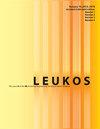Specifying Non-White Light Sources in Outdoor Applications to Reduce Light Pollution
IF 2.6
2区 工程技术
Q2 CONSTRUCTION & BUILDING TECHNOLOGY
引用次数: 1
Abstract
ABSTRACT Anthropogenic (“human-generated”) light at night (ALAN) from outdoor lighting produces light pollution and as a result causes a range of deleterious responses in humans, plants, and animals. An emerging strategy to combat light pollution, especially sky glow, is to use “amber” LEDs in lieu of phosphor-converted white LEDs with high correlated color temperatures. Importantly, however, there is no standardized terminology or chromaticity designation that is applicable to “amber” LED lighting products for outdoor illumination. In this work, we propose a specification structure for light sources with nonstandard chromaticities to increase the precision of language used in the architectural lighting industry and demonstrate that light sources with well-defined chromaticity ranges outside of the ANSI C78.377–2017 quadrangles may be useful for reducing the portion of relative sky glow related to light source spectral power distribution. We encourage lighting standards development organizations to consider standardizing such a system.在户外应用中指定非白光光源,以减少光污染
来自室外照明的人为夜间光(ALAN)会产生光污染,从而导致人类、植物和动物的一系列有害反应。一种对抗光污染,尤其是天空辉光的新策略是使用“琥珀色”led代替具有高相关色温的磷光转换白光led。然而,重要的是,没有标准的术语或色度名称适用于户外照明的“琥珀色”LED照明产品。在这项工作中,我们提出了一种非标准色度的光源规范结构,以提高建筑照明行业中使用的语言的精度,并证明在ANSI C78.377-2017四边形之外具有明确定义的色度范围的光源可能有助于减少与光源光谱功率分布相关的相对天光部分。我们鼓励照明标准开发组织考虑将这样的系统标准化。
本文章由计算机程序翻译,如有差异,请以英文原文为准。
求助全文
约1分钟内获得全文
求助全文
来源期刊

Leukos
工程技术-光学
CiteScore
7.60
自引率
5.60%
发文量
19
审稿时长
>12 weeks
期刊介绍:
The Illuminating Engineering Society of North America and our publisher Taylor & Francis make every effort to ensure the accuracy of all the information (the "Content") contained in our publications. However, The Illuminating Engineering Society of North America and our publisher Taylor & Francis, our agents, and our licensors make no representations or warranties whatsoever as to the accuracy, completeness, or suitability for any purpose of the Content. Any opinions and views expressed in this publication are the opinions and views of the authors, and are not the views of or endorsed by The Illuminating Engineering Society of North America and our publisher Taylor & Francis. The accuracy of the Content should not be relied upon and should be independently verified with primary sources of information. The Illuminating Engineering Society of North America and our publisher Taylor & Francis shall not be liable for any losses, actions, claims, proceedings, demands, costs, expenses, damages, and other liabilities whatsoever or howsoever caused arising directly or indirectly in connection with, in relation to, or arising out of the use of the Content. Terms & Conditions of access and use can be found at http://www.tandfonline.com/page/terms-and-conditions .
 求助内容:
求助内容: 应助结果提醒方式:
应助结果提醒方式:


